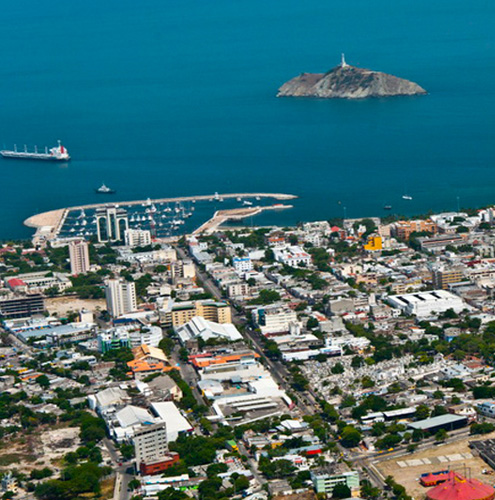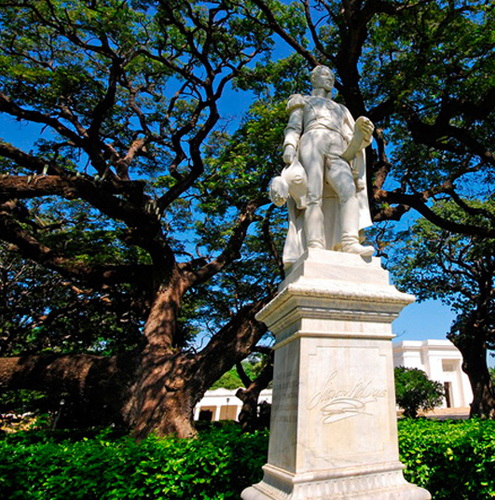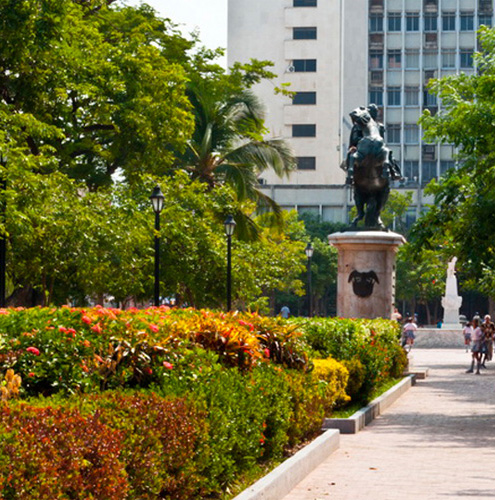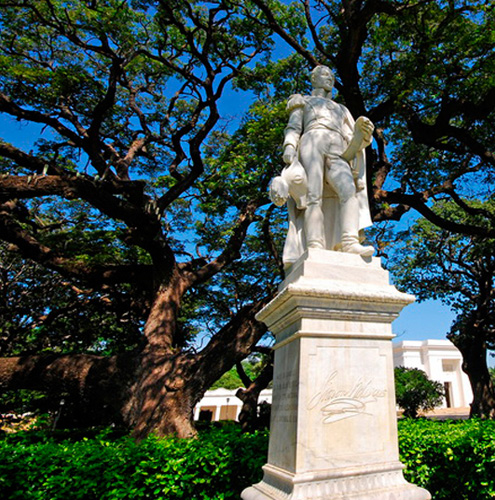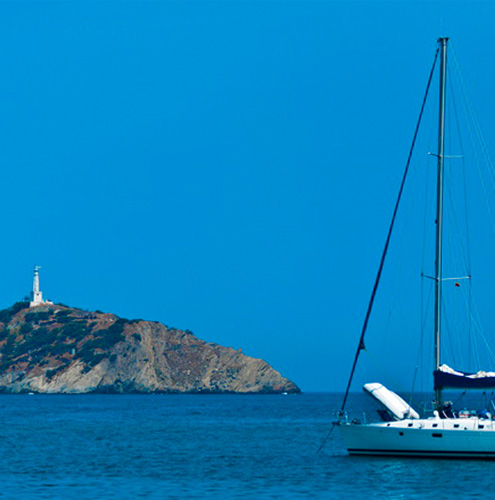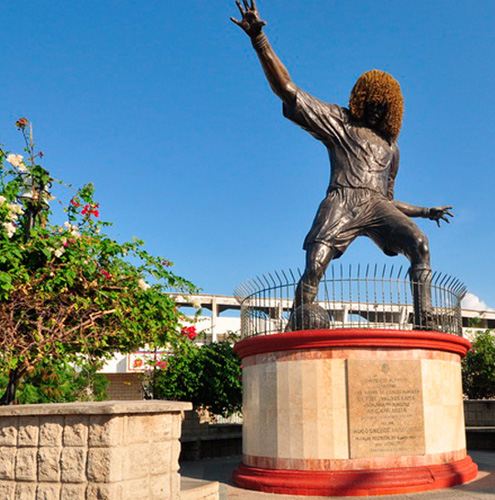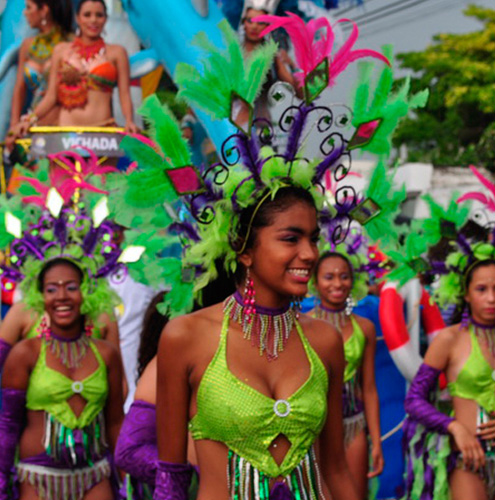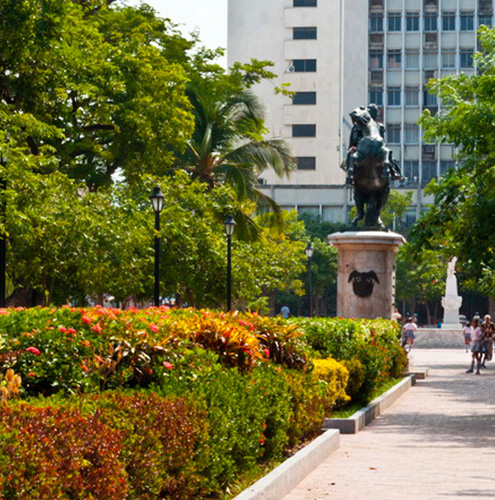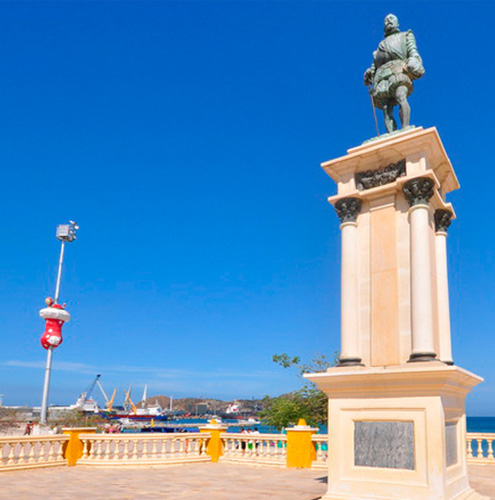DESTINATION
Santa Marta
It is thus a little slice of paradise offering the magic of history and of nature. Santa Marta’s architectural heritage is Spanish colonial and evokes the time of the banana bonanza. Within the Sierra Nevada are the archeologically significant remains of the indigenous Tayrona culture. Add superb beaches and extensive nature reserves protecting complex ecosystems, and you have the complete destination.
Santa Sarta
Naturalmente Mágica
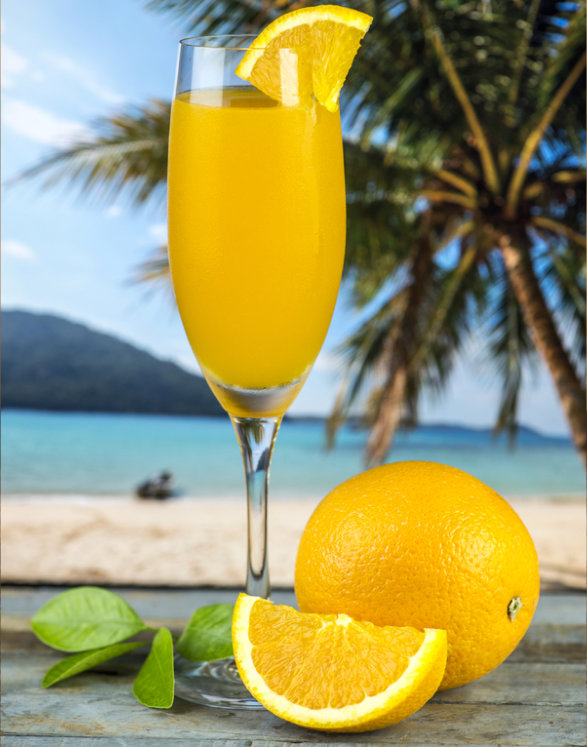
Playa Grande (Grand Beach)
Playa Grande is one of numerous beaches in Tayrona National Natural Park said to be among the most beautiful in the world and is the beach most visited by foreign tourists. It is located a mere 10 minutes from Taganga in a bay known for crystal-clear water and thus spectacular snorkeling and scuba diving and for its tranquility, cooling breeze, sun, and sand. Playa Grande can be accessed after a short walk through the hills amid the cries of parrots and howler monkeys. Or you can hire a ride to the beach from Taganga in a small fishing boat. Where aboriginal people once lived a subsistence lifestyle of fishing and hunting can be found many excellent seafood restaurants to satisfy the most discerning palate.
The Cathedral
What is simply referred to as the Cathedral is, in fact, the mother of all churches in Colombia and Spanish America. More accurately known as the Patroness, Our Lady of Santa Marta, the Cathedral was built over a 30-year period beginning in 1776. The result is a beautiful brick-and-stone, Renaissance-style structure. Various leaders of Santa Marta, including city founder Rodrigo de Bastidas, are entombed in the Cathedral. But for most Colombians and indeed many South Americans the Cathedral is best known as the first resting place of the body of liberator Simon Bolivar. Bolivar’s remains were entombed in the Cathedral for 11 years, 11 months, and 3 days until 1842.
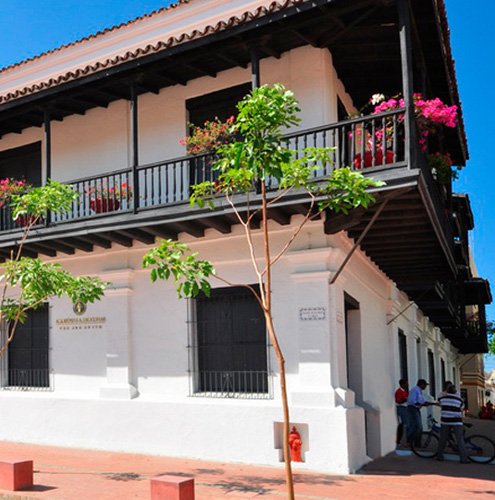
Casa de La Aduana (The Customs House)
The Customs House, said to be the oldest house in the Americas, was constructed in 1530 and was the first building of brick and stone in Santa Marta. It also was the first place in the world to host liberator Simon Bolivar in life and death. Up until 1500, the land on which the Customs House stands was the site of another, earlier important structure—a thatch-wall hut where the native Tayrona sheltered their gold artifacts. Today, the Customs House is the Tayrona Museum.
Parque Bolívar (Bolivar Park)
Bolivar Park is significant for its monument to Simon Bolivar, the liberator of Colombia, Venezuela, Ecuador, Peru, Bolivia, and Panama. The monument depicts Bolivar on his horse prepared for battle. It is situated facing the Bay of Santa Marta and the monument to the city’s founder, Spaniard Rodrigo de Bastidas.
Taganga
The fishing village of Taganga, part of Tayrona National Natural Park, is located just five minutes north of Santa Marta’s city center in the foothills of the Sierra Nevada de Santa Marta. Its slow pace and picturesque beach makes Taganga a place for relaxation and contact with the sea. Taganga’s waters are ideal for scuba diving..
Catedral
“Madre de todas las iglesias de Colombia” fue hecha en ladrillo y piedra con estilo renacentista. Durante mucho tiempo albergó la bóveda con el cadáver de Simón Bolívar, quien permaneció bajo su suelo 11 años 11meses y 3 días..
El Morro (The Fortress)
El Morro is a Santa Marta landmark. This mountainous island rising out of the Bay of Santa Marta is home to a Spanish fortress built in colonial times to safeguard the city from the constant attacks of pirates. Legends abound, making El Morro a modern-day tourist attraction from which to gain, moreover, an excellent overview of the city. It can be visited on Tuesdays and Fridays.
Valderrama Monument
Carlos Valderrama is the epitome of hometown boy makes good. This legendary footballer and Santa Marta native is best known among football (soccer) fans worldwide as El Pibe (the kid). He is the most capped player in football-mad Colombia’s history and was instrumental to the success of the Colombian team in the 1990s. His close-quarters ball handling, tactical foresight, ability to distribute the ball with pinpoint accuracy, and enormous blond afro made him one of the most recognized and sought-after players globally. None other than Pele named him a top player of the 20th century and to the FIFA 100 list of “greatest living footballers.” In 2006, Santa Marta erected a 6.71-meter (22-foot) bronze statue of El Pibe in front of the city’s Eduardo Santos Stadium.
Bahía de Santa Marta “El Camellón” Avenue de Rodrigo de Bastidas (Bay of Santa Marta Avenue of Rodrigo of Bastidas Promenade)
The Avenue de Rodrigo de Bastidas is Santa Marta’s principal, waterfront traffic artery. It fronts the Bay of Santa Marta and features the Bastidas promenade along which locals and tourists alike enjoy strolling day and night to take in the beach; the sun, sunrises, and sunsets; the folk musicians and other folk groups; and the food and beverage vendors dispensing mainly local fare. Little wonder then that this is among the most popular beachfronts in the Americas.
La Quinta de San Pedro Alejandrino (The Estate of Saint Peter of Alexandria)
Constructed in the 17th century and once a producer of rum, honey, and panela, the estate, or hacienda, dedicated to Saint Peter of Alexandria is today renowned as the death place of Simon Bolivar. It is a popular tourist destination for local people and for visitors from abroad that combines history, culture, and nature. This national monument is part museum, part art space, and part garden. The structures and agricultural past of the estate are themselves a part of Colombian and Santa Marta history. That it is where Bolivar died makes it moreso, and this is commemorated with a statue of Bolivar and a monument to his memory built in 1930 to mark his death 100 years earlier. The hacienda also is home to the Bolivarian Museum of Contemporary Art, which includes many of the liberator’s personal belongings, and to an exquisite botanical garden highlighting native plant species.
Fiestas del Mar (Festival of the Sea)
Held annually in July during Colombia’s midyear vacation period, the Festival of the Sea celebrates Santa Marta’s ties to the ocean. The monthlong celebration spans marine sports, including a jet ski show; beauty pageants to crown Colombia’s Queen of the Sea; parades; and citywide parties. Held under the slogan Santa Marta, la magia de tenerlo todo (Santa Marta, the magic of having it all), the Festival of the Sea truly does showcase all that Santa Marta has to offer. It is, therefore, the perfect reason for visitors from Colombia and abroad to come to Santa Marta.
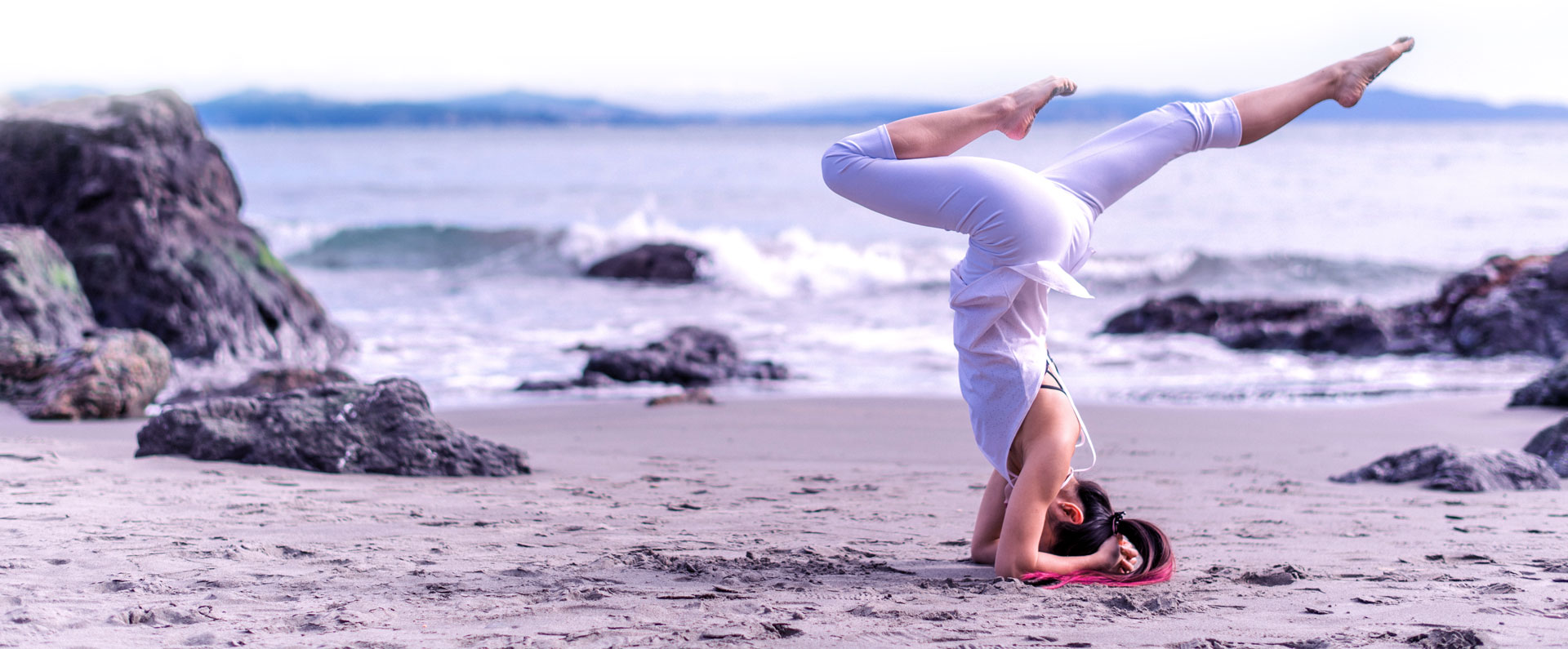
Contact Information
Location
Street12 N. 2-38 Centro
Santa Marta D.T.C.H., Magdalena Colombia – CP 470001
Contact
Phone:
+57 5 422 6496 | +57 5 431 80 55
Celphone: +57 318 826 8837
eMail: reservas@hotelsantamartareal.com
Visit uS

